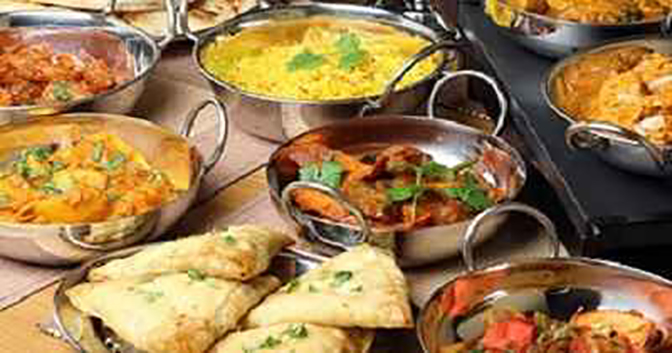| Spicing Up the Economy: The Impact of Indian Restaurants and Takeaways in Britain | |
| Introduction: In the bustling towns and cities of Britain, the aroma of spices and the sizzle of tandoori grills signify more than just a meal; they mark the presence of a vibrant Indian food industry. From Annfield Plain to Stanley, Indian restaurants and takeaways are not only culinary hotspots but also significant contributors to the local economy. This article delves into how these establishments are influencing economic growth and cultural integration in the UK. | |
 |
|
The Economic Engine of Indian CuisineJob Creation and EmploymentIndian eateries provide an array of employment opportunities, contributing to the British job market significantly. Here’s how they do it:• Diverse Roles: From chefs mastering Indian curry in Annfield Plain to delivery drivers navigating the streets of Stanley, these businesses support a wide range of jobs. • Skill Development: Many Indian restaurants invest in training their staff, enhancing their culinary and hospitality skills, which in turn improves service quality and customer satisfaction. Fostering Local BusinessesThe synergy between Indian eateries and local suppliers creates a ripple effect throughout the economy:• Local Produce Usage: Restaurants often source ingredients like vegetables, meats, and spices from local producers, boosting the local agriculture. • Supply Chain Benefits: From kitchen equipment to packaging, local businesses find a steady market in the growing needs of these food establishments.  Boosting Local Economies through Indian Takeaway and Home DeliveryEnhanced Convenience and AccessibilityThe popularity of Indian takeaway and home delivery in places like Stanley and Annfield Plain reflects changing consumer preferences towards convenience:• Expanding Market Reach: By offering home delivery, Indian eateries can serve a broader demographic, including those unable to visit the restaurants in person. • Increased Sales Opportunities: Evening and weekend orders particularly boost revenue, as these are peak times for customers opting to dine at home. Technological AdoptionEmbracing digital solutions has allowed Indian restaurants and takeaways to streamline operations and enhance customer interactions:• Online Ordering Systems: These platforms increase efficiency and improve the ordering experience for customers, leading to higher satisfaction and repeat business. • Marketing Innovations: Utilizing social media and digital marketing, Indian eateries effectively promote special offers and new menu items, attracting more customers. Cultural Impact and Community Engagement Promoting Cultural Diversity
Indian restaurants do more than just fill bellies; they open doors to cultural exchange:
• Culinary Education: Food festivals and themed nights introduce patrons to the diverse culinary landscape of India, promoting understanding and appreciation. • Community Events: Participating in local events and hosting celebrations like Diwali or Holi, these establishments help weave Indian culture into the fabric of local British communities. Enhancing the Dining LandscapeIndian cuisine adds vibrancy to Britain’s dining scene, influencing food trends and preferences across the country:• Innovative Menus: Fusion dishes and modern takes on traditional recipes keep the culinary offerings exciting and diverse. • Dietary Inclusivity: Offering a range of vegetarian, vegan, and gluten-free options caters to a broader audience, aligning with current health and lifestyle trends. Economic Resilience and Future ProspectsNavigating ChallengesDespite their success, Indian restaurants and takeaways face several challenges:• Economic Fluctuations: Factors like economic downturns and fluctuating ingredient prices can impact profitability. • Regulatory Changes: Navigating food safety regulations and immigration laws for staff can be complex. Opportunities for GrowthLooking forward, the sector shows promising avenues for expansion:• Health-Conscious Menus: Increasing demand for healthy dining options presents an opportunity to innovate with ingredients and cooking techniques. • Sustainability Practices: Implementing eco-friendly practices like reducing waste and using sustainable packaging can attract environmentally conscious consumers. ConclusionIndian restaurants and takeaways are pivotal to the British economy, not just as food providers but as cultural ambassadors and economic stimulants. From "the best Indian food in Stanley" to "Indian takeaway delivery in Annfield Plain," these establishments contribute significantly to the economic vitality and cultural richness of their communities. As they continue to evolve and adapt, their role in the UK's economic landscape will undoubtedly strengthen, spicing up both the economy and our plates.This comprehensive exploration reveals just how integral Indian cuisine has become to Britain, both culturally and economically, ensuring these vibrant businesses remain at the heart of local communities and economic discussions. FAQ: Indian Restaurants and Takeaways in the British Economy1. How do Indian restaurants contribute to job creation in the UK?• Indian restaurants and takeaways create jobs in various capacities, including chefs, waitstaff, delivery drivers, and administrative roles. They also invest in training their staff, enhancing skill development in the culinary and hospitality sectors.2. In what ways do Indian restaurants support local businesses?• Indian eateries often source their ingredients from local suppliers, such as farms and grocers, boosting local agriculture and supporting small businesses involved in supplying kitchen equipment and packaging materials.3. How do Indian takeaways promote convenience and accessibility?• With services like home delivery and online ordering, Indian takeaways provide greater accessibility, allowing customers to enjoy meals at home and expanding the restaurant's reach to a broader demographic.4. What technological innovations are Indian restaurants adopting?• Indian restaurants are incorporating online ordering systems and mobile apps to streamline operations and improve the customer experience. They also use digital marketing and social media to attract and engage customers.5. How do Indian restaurants enhance cultural diversity in the UK?• Through food festivals, themed nights, and community events like Diwali and Holi celebrations, Indian restaurants promote cultural understanding and integration, introducing British patrons to the diverse culinary and cultural landscape of India.6. What role do Indian restaurants play in the dining landscape of the UK?• Indian cuisine adds vibrancy to the UK’s dining scene with innovative menus and fusion dishes. It also caters to various dietary preferences, including vegetarian, vegan, and gluten-free options.7. What are some challenges faced by Indian restaurants and takeaways in the UK?• Challenges include navigating economic fluctuations, managing rising ingredient costs, and adhering to regulatory changes in food safety and employment.8. What future opportunities exist for Indian restaurants in the UK?• Opportunities for growth include expanding into health-conscious menus, incorporating sustainable practices, and continuing to innovate with new dishes and dining concepts to attract a wider audience. |
|
 |
|
